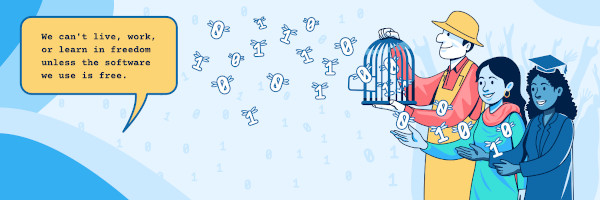flarq(1)
NAME
flarq - ARQ data transfer utility for fldigi
SYNOPSIS
flarq [OPTIONS]
DESCRIPTION
Flarq (fast light automatic repeat request) is a file transfer application that is based on the ARQ specification developed by Paul Schmidt, K9PS. It is capable of transmitting and receiving frames of ARQ data via fldigi, as well as MultiPSK on Windows.
OPTIONS
Long options begin with two hyphens and are handled by flarq. The option names may be abbreviated to any unambiguous substring, and the option argument may be separated from the name by a space or equals sign, as per getopt(3). Short options begin with a single hyphen and are passed directly to FLTK. They may be abbreviated only as indicated. --arq-protocol TYPE Set the ARQ protocol. May be either "fldigi" or "multipsk". Defaults to "fldigi". --arq-server-address HOSTNAME Set the ARQ TCP server address. Defaults to "127.0.0.1". HOSTNAME may be any node name string accepted by getaddrinfo(3). --arq-server-port PORT Set the ARQ TCP server port. Defaults to "7322". PORT may be any service name string accepted by getaddrinfo(3). --debug Enable debugging messages. --version Print version information and exit. --build-info Print build information and exit. --help Print options summary and exit. Standard FLTK options -bg, -background COLOUR Set the background colour. -bg2, -background2 COLOUR Set the secondary (text) background colour. -di, -display DISPLAY Specifies the X server to connect to; see X(7). -dn, -dnd or -nodn, -nodnd Enable or disable drag and drop copy and paste in text fields. -fg, -foreground COLOUR Set the foreground colour. -g, -geometry GEOMETRY Set the initial window size and position. Flarq may not honour this option. -i, -iconic Start flarq in iconified state. Flarq may not honour this option. -k, -kbd or -nok, -nokbd Enable or disable visible keyboard focus in non-text widgets. -na, -name CLASSNAME Set the window class. Defaults to "Flarq". -ti, -title WINDOWTITLE Set the window title. Defaults to "flarq - <callsign>". Additional UI options --font FONT[:SIZE] Set the widget font and (optionally) size. Defaults to "sans:12".
FILES
$HOME/.flarq
The main settings file.
The following directories are used to interface with MUAs such as
Sylpheed:
$HOME/Mail/ARQin
Stores incoming email messages.
$HOME/Mail/ARQout
Stores outgoing email messages.
$HOME/Mail/ARQsent
Stores sent email messages.
The following directories are used for ARQ file transfer:
$HOME/ARQrecv
Stores received files.
$HOME/ARQsend
Stores files to be transmitted.
$HOME/ARQfiles/logfile.txt
Stores transfer logs.
BUGS
* There are no command line arguments to override the default
configuration file and ARQ and Mail directories.
SEE ALSO
fldigi(1), getaddrinfo(3), getopt(3), X(7)
RESOURCES
Flarq web site: http://www.w1hkj.com/flarq_main.html Fldigi web site: http://www.w1hkj.com/Fldigi.html Sourceforge project page: http://sourceforge.net/projects/fldigi/ ARQ specification by Paul Schmidt, K9PS: http://www.w1hkj.com/FlarqHelpFiles/ARQ2.pdf
AUTHORS
Flarq was written by David Freese, W1HKJ. This manual page was written by Stelios Bounanos <sb[at]enotty(dot)net>.
COPYING
License GPLv3+: GNU GPL version 3 or later.
09/19/2016 FLARQ(1)
Opportunity
Personal Opportunity - Free software gives you access to billions of dollars of software at no cost. Use this software for your business, personal use or to develop a profitable skill. Access to source code provides access to a level of capabilities/information that companies protect though copyrights. Open source is a core component of the Internet and it is available to you. Leverage the billions of dollars in resources and capabilities to build a career, establish a business or change the world. The potential is endless for those who understand the opportunity.
Business Opportunity - Goldman Sachs, IBM and countless large corporations are leveraging open source to reduce costs, develop products and increase their bottom lines. Learn what these companies know about open source and how open source can give you the advantage.
Free Software
Free Software provides computer programs and capabilities at no cost but more importantly, it provides the freedom to run, edit, contribute to, and share the software. The importance of free software is a matter of access, not price. Software at no cost is a benefit but ownership rights to the software and source code is far more significant.
Free Office Software - The Libre Office suite provides top desktop productivity tools for free. This includes, a word processor, spreadsheet, presentation engine, drawing and flowcharting, database and math applications. Libre Office is available for Linux or Windows.
Free Books
The Free Books Library is a collection of thousands of the most popular public domain books in an online readable format. The collection includes great classical literature and more recent works where the U.S. copyright has expired. These books are yours to read and use without restrictions.
Source Code - Want to change a program or know how it works? Open Source provides the source code for its programs so that anyone can use, modify or learn how to write those programs themselves. Visit the GNU source code repositories to download the source.
Education
Study at Harvard, Stanford or MIT - Open edX provides free online courses from Harvard, MIT, Columbia, UC Berkeley and other top Universities. Hundreds of courses for almost all major subjects and course levels. Open edx also offers some paid courses and selected certifications.
Linux Manual Pages - A man or manual page is a form of software documentation found on Linux/Unix operating systems. Topics covered include computer programs (including library and system calls), formal standards and conventions, and even abstract concepts.
